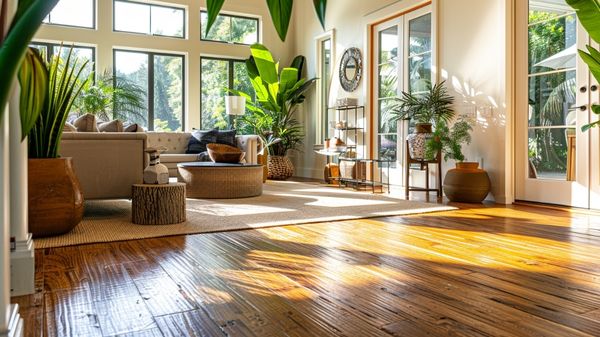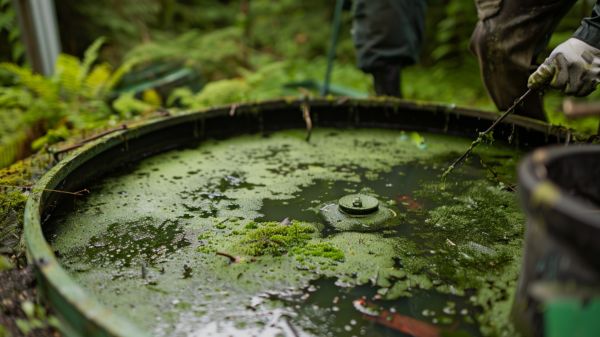Are you ready to embark on a journey towards creating an eco-friendly home? Look no further than this guide, where you will discover the wonders of sustainable home insulation.
From cellulose to denim, mineral wool to sheep wool, and cork to fiberglass, we will explore the diverse range of options available to you.
With fire-resistant properties, enhanced soundproofing, and the absence of harmful chemicals, these insulation choices will not only provide comfort but also contribute to a healthier planet.
Join us and become a part of the eco-homes movement!
Key Takeaways
- Cellulose insulation and denim insulation are two sustainable options for home insulation, both made from recycled materials and treated with boric acid for added benefits.
- Mineral wool insulation offers enhanced soundproofing properties, making it a great choice for those looking to reduce noise in their homes.
- Sheeps wool insulation and cork insulation are natural options that provide thermal protection and have fire-resistant properties, making them suitable for eco-homes.
- When considering insulation options, it is important to take into account the varying R-values of different materials, as well as their specific properties and suitability for different areas of the home.
Cellulose Insulation
If you want insulation that is derived from recycled materials and treated with boric acid to repel mold and pests, cellulose insulation is a great option for you. Cellulose insulation is made from recycled paper, such as newspapers and cardboard, which makes it an eco-friendly choice. It is treated with boric acid, a naturally occurring mineral, to provide additional protection against mold and pests.
One of the advantages of cellulose insulation is its excellent thermal and sound protection. It has an R-value of 3.5 per inch of insulation, which means it provides effective insulation for your home. The installation process is relatively simple and you can do it by blowing the cellulose fibers into the desired area, such as attics, walls, or floors.
In terms of environmental impact, cellulose insulation reduces waste by repurposing recycled materials. It also helps to reduce energy consumption by providing effective insulation, which can lower your heating and cooling costs.
When it comes to cost comparison, cellulose insulation is generally more affordable than other types of insulation, such as spray foam or mineral wool. It offers a cost-effective solution for homeowners who want to improve the energy efficiency of their homes without breaking the bank.
In terms of maintenance requirements, cellulose insulation does not require any special maintenance. However, it is important to ensure that the insulation is properly installed and not compressed, as this can reduce its effectiveness. Regular inspections of the insulation and addressing any issues promptly can help to maintain its performance over time.
Denim Insulation
Denim insulation, made from 80% recycled denim jeans, is easy to install in walls, attic floors, and ceilings and has an R-value of 3.5 per inch of insulation. When it comes to the installation process, denim insulation is a breeze. Simply cut the insulation to fit the desired area, and you can easily staple or nail it into place.
Aside from its ease of installation, denim insulation also offers numerous environmental benefits. By utilizing recycled denim, this type of insulation helps reduce waste and promotes sustainability. Additionally, denim insulation is free from harmful chemicals and toxins, making it safe for both the environment and your home.
In terms of cost comparison, denim insulation may be slightly more expensive upfront compared to traditional insulation materials. However, its durability and longevity make it a cost-effective choice in the long run.
Furthermore, denim insulation is familiar for its excellent acoustic properties. It can help reduce noise transmission between rooms, providing a quieter and more comfortable living space.
Mineral Wool Insulation
When it comes to mineral wool insulation, you’ll be impressed by its superior fire retardant properties and excellent sound deadening capabilities.
Mineral wool is made by melting basalt rock together with slag, resulting in a denser insulation material compared to fiberglass batts. This density allows mineral wool to repel water and prevent mold growth, making it a great choice for areas prone to moisture.
In terms of soundproofing, mineral wool outperforms other types of insulation, providing better acoustic insulation for your home. Additionally, it has an R-value of 4.0 per inch of insulation, offering excellent thermal protection. Furthermore, mineral wool is easy to handle and holds its shape better than fiberglass when it comes to installation.
From an environmental standpoint, mineral wool is a sustainable option as it is made from recycled materials. While it may be slightly more expensive than other types of insulation, the cost effectiveness of mineral wool lies in its durability and long lifespan, making it a wise investment for your eco-home.
Related Post: Green Home Improvements: Sustainable Living Starts at Home.
Sheeps Wool Insulation
You’ll appreciate the humidity-collecting and purifying properties of sheeps wool insulation. You can find it in batts or blown-in form and is suitable for ceilings, floors, attics, and walls.
Sheeps wool insulation offers numerous benefits for eco-conscious homeowners. Not only does it provide excellent thermal insulation, but it also absorbs and releases moisture, helping to regulate humidity levels in your home. This natural insulation material is also fire-resistant, biodegradable, and sustainable, making it an environmentally friendly choice.
The installation process for sheeps wool insulation is straightforward, whether you choose batts or blown-in form. You can easily fit it into various areas of your home, providing effective insulation and soundproofing.
While the cost of sheeps wool insulation may be slightly higher than other natural insulations, its long-term benefits and environmental impact make it a worthwhile investment. In comparison to other natural insulations like cellulose or denim, sheeps wool insulation offers superior moisture regulation and durability, making it a top choice for sustainable home insulation.
Cork Insulation
Cork insulation, derived from the bark of a specific type of oak tree, offers natural anti-fungal, fire-resistant, and antimicrobial properties. This sustainable option is suitable for homes and doesn’t require additional chemicals. Cork insulation comes in boards with varying R-values, ranging from 3.6 to 4.2 per inch. It provides excellent thermal and acoustic properties, making it an ideal choice for eco-homes.
Here is a table comparing cork insulation to other types of insulation:
| Insulation Type | Installation Process | Cost Comparison | Environmental Impact | Durability and Lifespan | Acoustic Properties |
|---|---|---|---|---|---|
| Cork Insulation | Easy to install | Can be expensive | Sustainable | Durable | Excellent |
| Fiberglass Insulation | Easy to install | Economical | Energy-intensive manufacturing process | Long lifespan | Fair |
| Mineral Wool Insulation | Easy to install | Moderate | Made from recycled materials | Long lifespan | Very good |
| Cellulose Insulation | Requires professional installation | Affordable | Made from recycled materials | Long lifespan | Good |
As you can see, cork insulation offers a simple installation process and is a sustainable choice. While it may have a higher upfront cost, its durability and lifespan make it a worthwhile investment. Additionally, its acoustic properties are excellent, providing a quieter and more comfortable living environment in your eco-home.
Fiberglass Insulation
If you’re looking for a cost-effective and easy-to-install option for insulating your walls, ceilings, or floors, fiberglass insulation is a popular choice. It is the most common type of insulation found in homes today and comes in batts that fit between framing members.
Fiberglass insulation is available in different sizes to suit your needs. One of the main advantages of fiberglass insulation is its affordability. It is relatively inexpensive compared to other insulation types. Additionally, fiberglass insulation is easy to install, making it a great option for DIY projects.
However, there are some drawbacks to consider. Fiberglass insulation can cause skin irritation and respiratory issues if not handled properly. It also has a lower R-value compared to other insulation types, meaning it may not provide as much insulation per inch. In terms of environmental impact, fiberglass insulation is not the most eco-friendly option as it is made from non-renewable resources. It also has a higher carbon footprint compared to insulation made from recycled materials.
When comparing fiberglass insulation to other types, like cellulose or mineral wool, it may not provide the same level of soundproofing or fire resistance. Overall, fiberglass insulation is a cost-effective and easy-to-install option, but it’s important to consider its limitations and environmental impact when making a decision.
Related Post: Sustainable Living Innovations: Innovative Ideas for A Greener Life.
Cellulose Loose-Fill Insulation
Now that you’ve learned about fiberglass insulation, let’s explore another sustainable option: cellulose loose-fill insulation.
Cellulose insulation is made from chemically treated recycled paper, making it an eco-friendly choice.
One of the benefits of cellulose insulation is its ease of installation. It can be installed with a motorized blower for attics or poured in for small spaces. This makes it a great option for insulating previously uninsulated homes. Additionally, cellulose insulation is the least expensive option for insulating walls or attic floors, making it a cost-effective choice.
In terms of environmental impact, cellulose insulation is made from recycled materials, reducing waste and promoting sustainability. It also has a high R-value of 3.5 per inch of insulation, providing excellent energy efficiency.
Overall, cellulose loose-fill insulation offers numerous benefits, a straightforward installation process, cost savings, and positive environmental impact. It’s a great choice for those looking to make their homes more energy-efficient and sustainable.
Rigid Foam Insulation (Extruded Polystyrene)
Rigid foam insulation, made from extruded polystyrene, is commonly seen in pink or blue foam boards and is ideal for insulating basement walls or exteriors of houses. This type of insulation offers numerous benefits.
Firstly, it has a high R-value, meaning it provides excellent thermal insulation, keeping your home warm in the winter and cool in the summer. Additionally, rigid foam insulation is easy to install, as you can cut it to fit any space and secured with adhesive or fasteners.
When it comes to cost comparison, rigid foam insulation may be slightly more expensive upfront compared to other insulation options, but its longevity and durability make it a cost-effective choice in the long run. It can last for decades without losing its insulating properties, saving you money on energy bills over time.
Furthermore, rigid foam insulation has a low environmental impact, as it is made from recyclable materials and does not release harmful gases. So, if you’re looking for a long-lasting, energy-efficient insulation solution, rigid foam insulation is a great choice for your home.
Polyurethane Spray Foam Insulation
Polyurethane spray foam insulation, while being the least DIY-friendly and most expensive type, offers the highest R-value per inch and acts as an air and vapor barrier.
When it comes to cost comparison, polyurethane spray foam insulation may have a higher upfront cost, but its long-term benefits make it a worthwhile investment.
The installation process involves spraying the foam into open cavities or drafty areas, ensuring a seamless and effective insulation barrier.
In terms of environmental impact, polyurethane spray foam insulation is not the most eco-friendly option, as it contains chemicals and can release volatile organic compounds (VOCs) during installation. However, its energy efficiency is unmatched, providing excellent thermal insulation and reducing energy consumption.
Additionally, the long-term durability of polyurethane spray foam insulation ensures that it will continue to perform at optimum levels for many years, making it a reliable choice for homeowners seeking lasting insulation solutions.
Benefits of Sustainable Home Insulation

If you’re looking for a more environmentally friendly and cost-effective insulation option, consider exploring sustainable materials like cellulose, denim, mineral wool, sheeps wool, or cork. These materials offer numerous advantages for your home insulation needs.
Firstly, they provide excellent energy efficiency by reducing heat transfer and acting as a barrier against cold air infiltration. This not only helps to keep your home comfortable year-round but also reduces your energy consumption and lowers your utility bills.
Additionally, sustainable insulation materials have a minimal environmental impact as they are made from recycled or natural materials. This means that they have a lower carbon footprint compared to traditional insulation options.
Furthermore, using sustainable insulation can lead to significant cost savings in the long run. By reducing your energy consumption, you can save money on your heating and cooling costs.
Lastly, these materials offer health benefits by being non-toxic and free from harmful chemicals. They are also resistant to mold and pests, providing a healthier indoor environment for you and your family.
Overall, choosing sustainable insulation materials is a smart choice for both your wallet and the environment.
Related Post: The Ultimate Guide to Green Living: Eco-Friendly Choices for a Sustainable Lifestyle.
Frequently Asked Questions
How Does the Cost of Sustainable Home Insulation Compare to Traditional Insulation Options?
When comparing the cost of sustainable home insulation to traditional options, it’s important to consider factors such as energy savings, environmental impact, installation process, and availability. Sustainable insulation may have a higher upfront cost, but it can lead to long-term savings and reduce your carbon footprint. Additionally, sustainable insulation options are becoming more accessible and widely available, making it easier to incorporate them into your eco-home.
Do Sustainable Home Insulation Materials Pose Any Potential Health Risks?
When it comes to sustainable home insulation, you may be wondering about potential health risks. While there are some safety concerns, such as the use of chemicals in certain materials, overall, sustainable insulation options prioritize environmental impact and energy efficiency without compromising indoor air quality.
Can You Use Sustainable Home Insulation in Older Homes With Existing Insulation?
Yes, you can use sustainable home insulation in older homes with existing insulation. It is relevant for retrofitting, effective in improving energy efficiency, compatible with existing insulation, and has a long lifespan in retrofit projects. However, challenges may arise during the retrofitting process.
What Is the Expected Lifespan of Sustainable Home Insulation Materials?
The expected lifespan of sustainable home insulation materials varies depending on the type and maintenance. Cellulose, denim, mineral wool, sheeps wool, and cork insulation can last 50+ years with proper care. They are durable, have low environmental impact, and provide excellent energy efficiency.
Are There Any Specific Installation Requirements or Considerations for Sustainable Home Insulation?
When it comes to sustainable home insulation, there are specific installation requirements and considerations. You need to consider insulation material options, energy efficiency benefits, environmental impact, and maintenance requirements.
Conclusion
Sustainable home insulation is an essential aspect of creating an eco-friendly living space. By using insulation derived from recycled materials, such as cellulose or denim, you can effectively reduce energy consumption and create a more comfortable and soundproof environment.
For example, imagine a case study where a family installs cellulose insulation in their home. They immediately notice a significant decrease in their energy bills and experience improved indoor air quality due to the insulation’s mold and pest repellent properties.
This visual representation showcases the practical benefits of sustainable home insulation and its positive impact on both the environment and homeowners’ quality of life.




